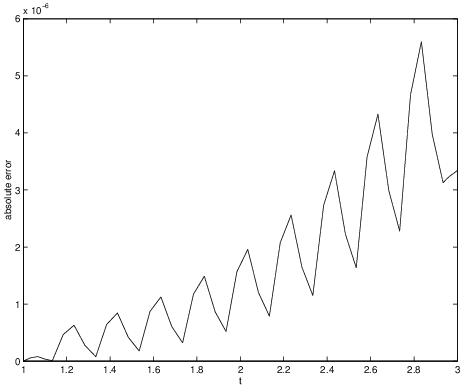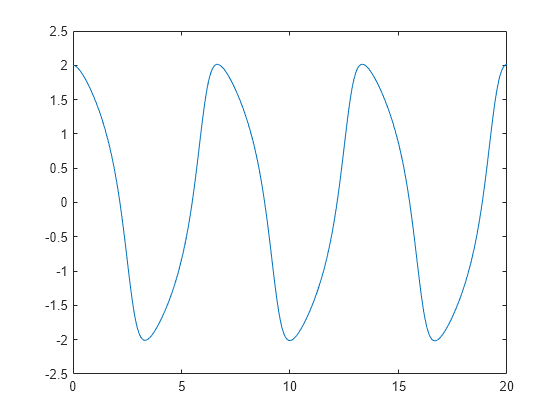


And Simulink blocks set ode45 as the default solver.

The MATLAB documentation recommends ode45 as the first choice. Ode45 is the anchor of the differential equation suite. In fact, it may be so accurate that the interpolant is required to provide the desired resolution. For differential equations with smooth solutions, ode45 is often more accurate than ode23. ode45 does more work per step than ode23, but can take much larger steps. ode45 is a six-stage, fifth-order, Runge-Kutta method. Ode23 is a three-stage, third-order, Runge-Kutta method. Here are the corresponding parameters for the Dormand-Prince algorithm used in ode45. And the array E provides the coefficients in the error estimate. The array B provides the weights for the slopes. The array A gives the fractions for each partial step. We see that ode23 is a third order method. The parameter pow is used in the step size calculation.

The most important place they differ is the portion that sets the key parameters. The codes for the two routines ode23 and ode45 are very similar. So the interpolant is called up to produce more finely spaced output at no additional cost measured in function evaluations. This means that the step size the algorithm naturally wants to choose is so large that the output is more widely spaced than most people prefer. The new ode45 is so effective that it is the only function in the suite where the default value of the refine argument is set to 4. It uses six stages, employs the FSAL strategy, provides fourth and fifth order formulas, has local extrapolation and a companion interpolant. The new ode45 introduced in the late 1990s is based on an algorithm of Dormand and Prince. The Felhberg (4,5) pair did a terrific job for almost fifteen years until the late 1990s when Shampine and MathWorker Mark Reichelt modernized the suite and introduced a more efficient algorithm. RKF45 became the basis for the first version of ODE45 in MATLAB in the early 1980s and for early versions of Simulink. $$ s_2 = f\left(t_n+$ anyplace else in mathematical software. The method has three stages, but there are four slopes $s_i$ because, after the first step, the $s_1$ for one step is the $s_4$ from the previous step. The " 23 " in the function name indicates that two simultaneous single-step formulas, one of second order and one of third order, are involved. Przemyslaw is now a Professor at Old Dominion University. The BS23 algorithm is due to Larry Shampine and his student Przemyslaw Bogacki. And, in a strategy known as FSAL, for First Same as Last, the final function value at the end of a successful step is used at the initial function value at the following step. The step size $h$ expected to achieve a desired accuracy is passed from step to step. Two important pieces of information are passed from one step to the next. Each step is almost independent of the previous steps. They are also known as Runge-Kutta methods. The two functions ode23 and ode45 are single step ODE solvers.


 0 kommentar(er)
0 kommentar(er)
